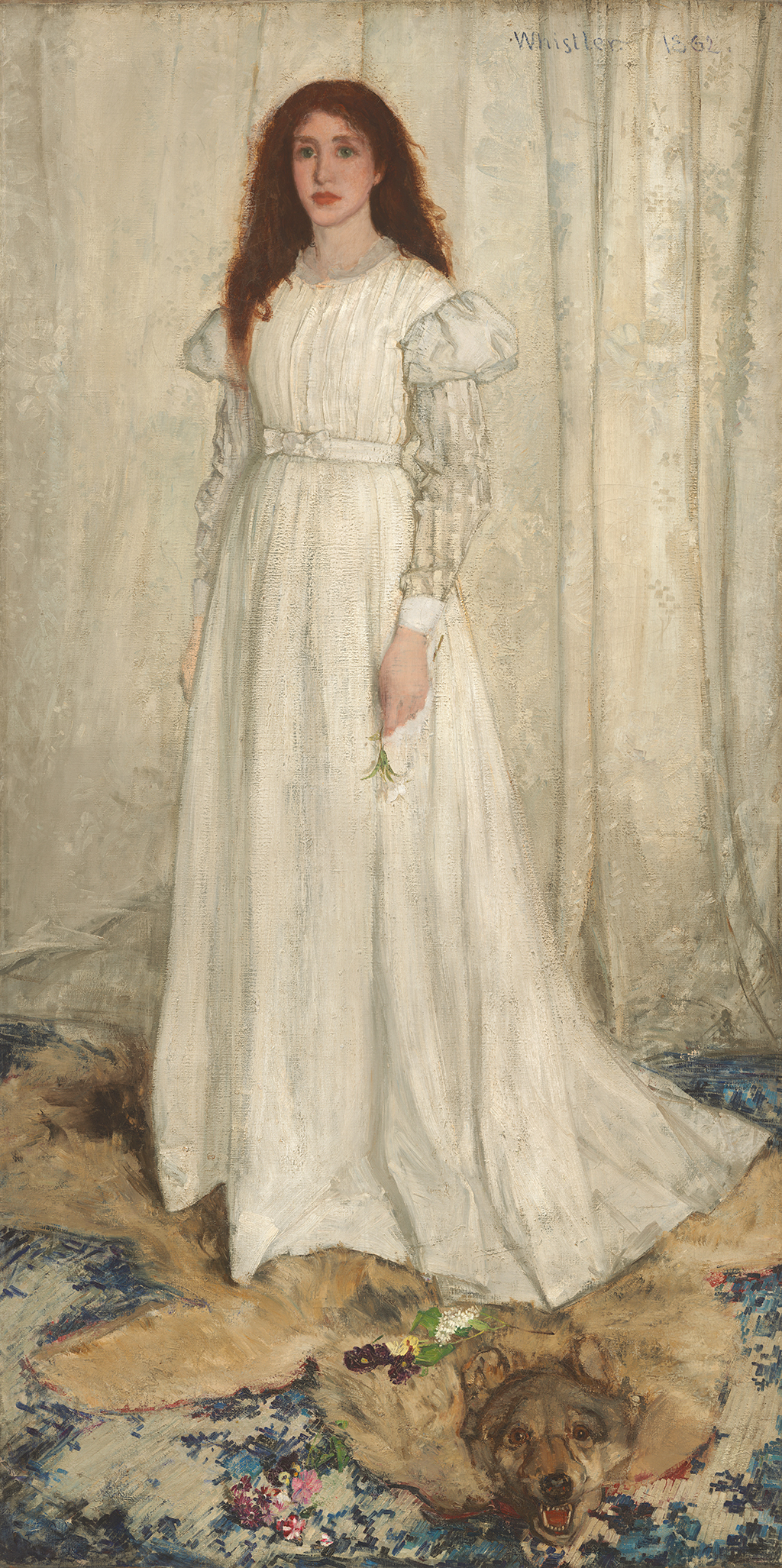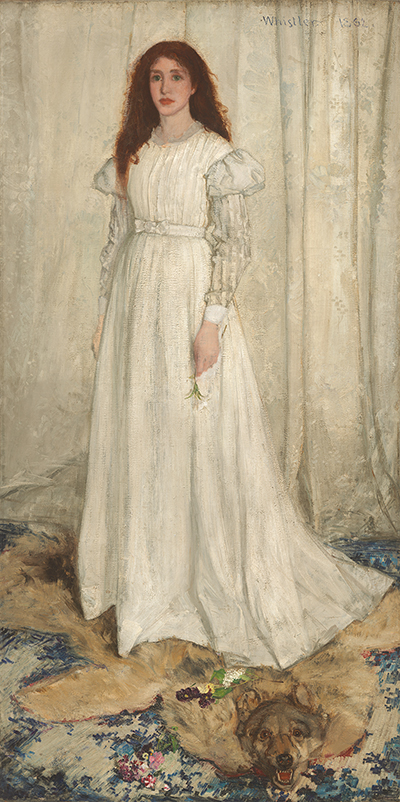Symphony in White, No 1, also referred to as The White Girl, is a painting by James Abbott McNeill Whistler that shows a woman standing on a wolf skin, with a lily in her hand. Behind her, there is a white curtain, and the woman is another variation of the white color.
As a result, the color scheme of the painting is almost completely white. Whistler painstakingly worked on the painting during the winter of 1861-1862. In the painting, the woman wears an informal cambric private house dress. Her bold red hair is loose, providing a striking contrast against the otherwise passive background. Her gaze is unfocused, and her expression seemingly vacant. The model, Joanna Heffernan, was his mistress, and she also made appearances in other paintings during the time. The White Girl is an oil on canvas painting with a limited palette. The variable pigments of white are used to bring forth interesting spatial and formal relationships. The work is distinguished due to its flattened forms and abstracted patterns, minimalized tonal contrast, and a sharply distorted perspective. The patterning of the painting is also seen as decorative. Based on these features, Whistler intended to achieve an abstract design with The White Girl, rather than capturing exactly what his model looked like.
The painting was reminiscent of Japanese prints, which were increasing in popularity in Paris, where Whistler was based when he painted The White Girl. He made the painting with plans to submit it to the Royal Academy of Arts exhibition in London. However, his work wasn't displayed, instead of being kept with other rejects. Reception of the painting was similarly lukewarm at Morgan's, a gallery in London, and it was also rejected by the 1863 Paris Salon. The work wasn't his most popular since it was a stark departure from what was considered to be the norm during that particular era.
The painting has been commissioned by Mark Lovett, who was able to recreate some of the original finishing techniques and general vintage look of Whistler's work. He was able to achieve this using dry brush and scumbling, along with using a big weave canvas. The White Girl is currently in the National Gallery of Art in Washington, D.C. Although Whistler's style is unique, there are elements of Edouard Manet and Gustave Courbet in his work, fellow artists who also refused to be defined by the traditions of that era. Whistler was also influenced by Theophile Gautier. Whistler strongly believed in the "art for art's sake" philosophy, and his influence is apparent in the works of artists such as John Singer Sargent, Jackson Pollock and Mark Rothko.





